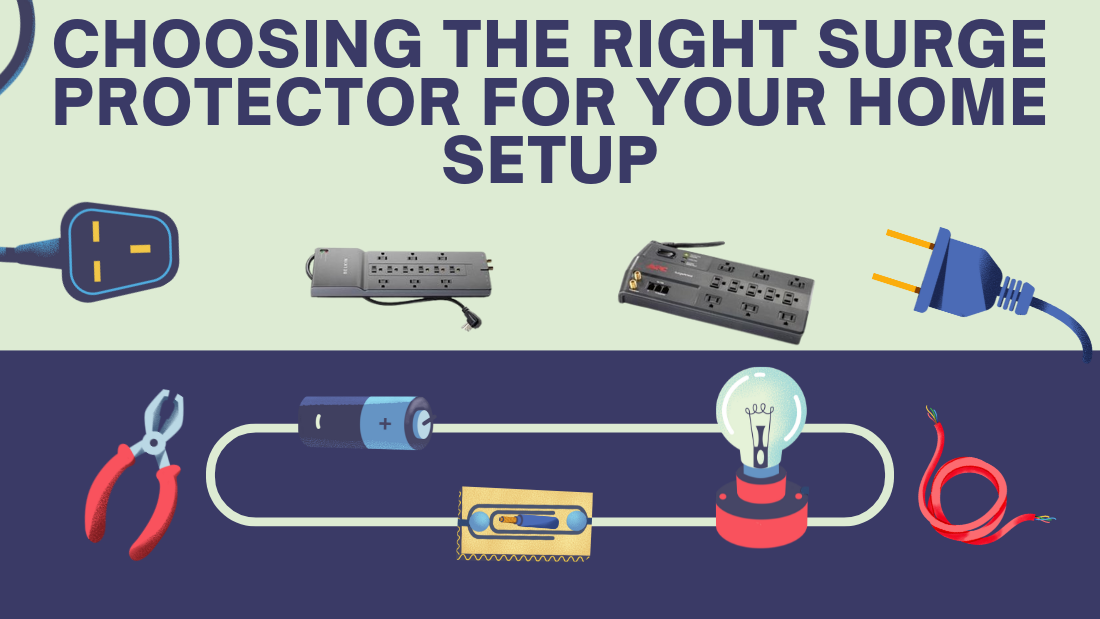In today’s tech-driven world, protecting your gadgets is non-negotiable. From expensive TVs to laptops and gaming consoles, all your devices are vulnerable to power surges. The good news? A surge protector is your best defense! But with so many options, how do you choose the right one for your home setup? Let’s break it down.
What is a Surge Protector and Why Do You Need It?
A surge protector shields your electronics from sudden voltage spikes. These spikes, often caused by lightning, faulty wiring, or power outages, can fry your gadgets in seconds. Without a surge protector, even a small fluctuation could lead to expensive repairs—or worse, permanent damage.
Investing in a reliable surge protector not only saves your devices but also ensures peace of mind. Check out a wide range of surge protectors here.
Key Features to Look for in a Surge Protector
Not all surge protectors are created equal. To choose the right one, focus on these key features:
Joule Rating
The joule rating indicates how much energy the surge protector can absorb. Higher ratings mean better protection. For a home office or entertainment center, aim for at least 2,000 joules.
Number of Outlets
Think about how many devices you’ll plug in. From laptops to printers, gaming consoles to smart TVs, your surge protector should handle it all. Some models even offer USB ports for added convenience.
Clamping Voltage
Lower clamping voltage ensures better protection. Look for surge protectors with clamping voltages between 330V and 400V for maximum safety.
Response Time
A surge protector should react in nanoseconds. Faster response times reduce the risk of damage to your devices.
Additional Features
Some surge protectors come with cool extras like LED indicators, auto shut-off functions, or wall-mounting options. Features like these make your setup more efficient and user-friendly.
Types of Surge Protectors
Surge protectors come in various styles to suit different needs. Here’s a quick guide to help you decide:
Power Strip Surge Protectors
These are the most common and versatile. Perfect for desks, home offices, or entertainment areas, they offer multiple outlets and USB ports in a compact design.
Whole-House Surge Protectors
If you want to protect every electronic device in your home, this is your go-to option. Installed directly into your electrical panel, these protectors shield your entire house from surges.
Wall-Mount Surge Protectors
Wall-mount surge protectors plug directly into your outlets and work great for compact spaces. They’re ideal for protecting gadgets like routers, modems, or kitchen appliances.
Smart Surge Protectors
For tech enthusiasts, smart surge protectors are a game-changer. They let you control connected devices via an app, schedule power usage, and even monitor energy consumption.
Find the perfect surge protector for your needs here.
How to Match Your Setup with the Right Surge Protector
Your choice of surge protector depends on your setup. Let’s look at a few scenarios:
For a Home Office
If you’re working from home, you probably have a laptop, printer, router, and maybe even a second monitor. Opt for a power strip surge protector with at least six outlets and USB ports. A joule rating of 2,000 or more is ideal.
For an Entertainment Center
TVs, sound systems, gaming consoles, and streaming devices need robust protection. Look for a surge protector with multiple outlets, high joule ratings, and low clamping voltage.
For the Kitchen
Small appliances like coffee makers, blenders, and microwaves can also benefit from surge protection. A wall-mount surge protector with fewer outlets will do the trick.
For Whole-House Protection
If you have high-value electronics throughout your home, invest in a whole-house surge protector. It’s an upfront expense but offers unmatched coverage and peace of mind.
Pro Tips for Maintaining Your Surge Protector
Even the best surge protectors need occasional TLC. Here’s how to ensure yours lasts:
- Replace When Needed: Surge protectors don’t last forever. Over time, their protective components wear out. Replace yours every 3-5 years or after a major surge.
- Check the Indicator Light: Many surge protectors have an LED light that shows they’re working. If the light goes off, it’s time for a replacement.
- Avoid Overloading: Don’t plug too many devices into a single surge protector. Overloading reduces its efficiency and can lead to overheating.
- Keep It Dry: Water and electronics don’t mix. Place your surge protector in a dry, safe spot away from spills or humidity.
Why You Shouldn’t Settle for Cheap Options
It’s tempting to grab the cheapest surge protector on the shelf, but this is one area where quality matters. A low-quality surge protector might fail during a power surge, leaving your gadgets unprotected.
Instead, invest in a reliable surge protector from trusted brands. Browse high-quality options here.
FAQs About Surge Protectors
Q: Can I use a surge protector with high-power appliances?
A: Yes, but ensure the surge protector’s joule rating and wattage support the appliance. For heavy-duty items like refrigerators or washing machines, a dedicated surge protector is recommended.
Q: How do I know if my surge protector is working?
A: Check the LED indicator. If it’s off, the surge protector might no longer offer protection and should be replaced.
Q: Do surge protectors consume energy when not in use?
A: Minimal energy is consumed when plugged in but not actively in use. However, unplugging it can save energy over time.
Protect Your Devices the Smart Way
Choosing the right surge protector is essential for safeguarding your electronics and keeping your home setup running smoothly. By focusing on features like joule ratings, outlet numbers, and response times, you’ll find the perfect fit for your needs.
Don’t leave your gadgets vulnerable to power surges! Explore a variety of top-rated surge protectors here. Your devices—and your wallet—will thank you.
Whether you’re gearing up your home office, setting up a gaming hub, or just looking for peace of mind, the right surge protector makes all the difference. Protect smarter, not harder!






